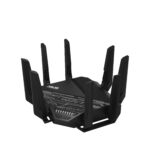We’ve seen manufacturers do almost everything with laptops. From reversible to multi-screen options – they’ve come a long day since their inception. But recently there’s been a new type of laptop; one without a screen at all. The Sightful Spacetop is one such model leading the way. Instead of a screen, it uses special glasses to show a virtual 100-inch display. This can change how we work and use digital content.
Rather than having a physical screen, these laptops use special glasses to project a virtual workspace. They offer privacy, are easy to carry around, and may have health benefits. The Spacetop is a good choice for travelers and people who work away from the office. However, it costs about $1,900, which is similar to high-end laptops with regular screens. While it’s easy to carry around and offers privacy, not everyone may find the cost worth it.

Screenless Laptops: The Future of Computing
Sightful’s Spacetop G1
Sightful, an Israeli company, created the Spacetop G1. It’s a laptop that uses augmented reality (AR) glasses instead of a screen. The glasses project a virtual screen for the user, while a built-in camera tracks hand movements for typing and navigation.
Features
| Feature | Description |
|---|---|
| Display | Augmented reality glasses project a virtual screen. |
| Input | Built-in camera tracks hand movements for typing and navigation. |
| Processor | Qualcomm Snapdragon 865 |
| Battery Life | Up to 10 hours |
| Operating System | Custom Android-based OS |
| Connectivity | Wi-Fi, Bluetooth, USB-C |
| Additional Features | Noise-canceling microphones, built-in speakers, 5MP webcam |

Potential Benefits
Screenless laptops offer several potential benefits, including:
- Increased Privacy: Virtual screens are only visible to the user, making it ideal for public spaces.
- Reduced Eye Strain: AR glasses may be less straining on the eyes than traditional screens.
- Portability: Screenless laptops are typically lighter and more compact than traditional laptops.
- Immersive Experience: AR glasses can create a more immersive computing experience.
Challenges and Limitations
Screenless laptops are still a new technology, and there are some challenges and limitations to consider:
- Cost: Screenless laptops are currently more expensive than traditional laptops.
- Technology Limitations: The technology is still under development, and there may be some limitations to the functionality and performance of screenless laptops.
- Social Acceptance: People may be hesitant to adopt this new technology, as it is a significant departure from traditional laptops.
The Future of Screenless Laptops
Despite the challenges, screenless laptops have the potential to revolutionize the way we use computers. As the technology continues to develop, we can expect to see more affordable and capable screenless laptops in the future.
Key Takeaways
- Screenless laptops use AR glasses to project large virtual displays.
- Spacetop from Sightful offers a 100-inch virtual screen.
- It combines portability and privacy but is priced like high-end traditional laptops.
Fundamentals of Screenless Laptops
Screenless laptops are transforming how users interact with technology by removing the traditional screen and using augmented reality (AR). Below are the core concepts and technologies behind these devices.
Concept and Design
Screenless laptops like the Spacetop G1 offer a new way to compute using augmented reality glasses instead of a built-in display. The glasses project a virtual screen that surrounds the user, creating a large digital workspace. These laptops are light and portable with sleek designs to maximize mobility and comfort.
Some models feature the custom software, such as SpaceOS, to run apps effectively within the AR environment. The laptops still use traditional input devices like a keyboard and touchpad, maintaining familiarity while enhancing the overall computing experience with spatial computing features.
Core Technologies
The key technologies in screenless laptops integrate hardware and advanced AR software. They often use processors like the Qualcomm Snapdragon XR2, which is powerful enough for rendering multiple virtual screens. The Snapdragon 865 ensures smooth performance, paired with sufficient RAM and storage.
AR glasses in these laptops have high resolution and wide field of view, giving a clear and immersive user experience. The glasses connect via USB-C and support Bluetooth 5.3, enabling versatile connectivity. The laptops also include long-lasting batteries to handle extended sessions without frequent charging.
User Interaction
Interaction with screenless laptops combines traditional and innovative methods. Users can still type on a keyboard and navigate with a trackpad or mouse. In AR, users can interact with virtual objects and apps using gestures for added functionality. AR glasses accurately track these gestures, creating an intuitive interaction experience.
The virtual workspace allows for placing multiple apps and windows around the user easily, enhancing productivity by reducing the need to switch between screens. This setup makes tasks like coding, designing, and multitasking more efficient, giving users a significant advantage in their work.
The first screenless laptop, Spacetop, exemplifies how these principles come together to create a powerful and portable computing solution.







